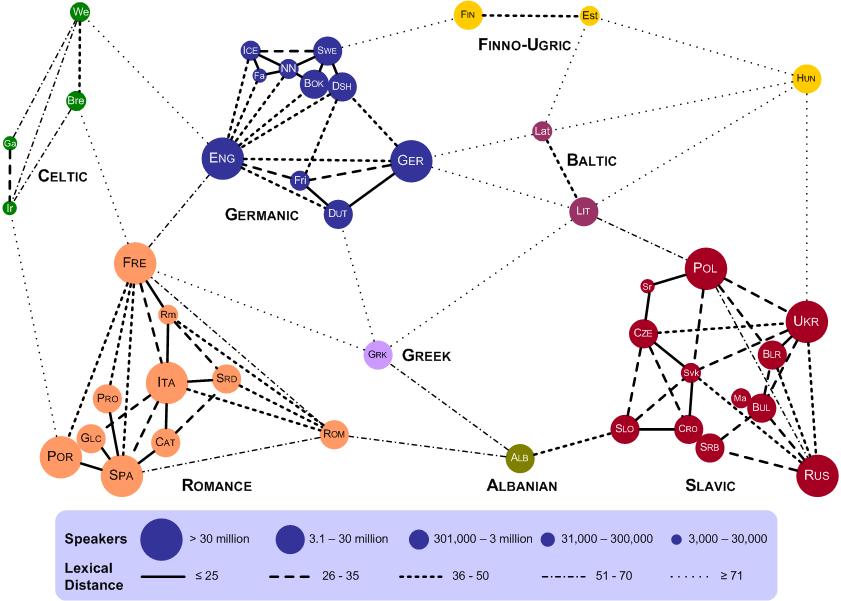How close do you think your language is to another one? Which linguistic relations between European languages did you expect? Check it in the chart below, extracted by an original research data by K. Tyshchenko (1999), Metatheory of Linguistics. (Published in Russian.)
This chart shows the lexical distance — that is, the degree of overall vocabulary divergence — among the major languages of Europe.
The size of each circle represents the number of speakers for that language. Circles of the same color belong to the same language group. All the groups except for Finno-Ugric (in yellow) are in turn members of the Indo-European language family.
English is a member of the Germanic group (blue) within the Indo-European family. But thanks to 1066, William of Normandy, and all that, about 75% of the modern English vocabulary comes from French and Latin (ie the Romance languages, in orange) rather than Germanic sources. As a result, English (a Germanic language) and French (a Romance language) are actually closer to each other in lexical terms than Romanian (a Romance language) and French.
So why is English still considered a Germanic language? Two reasons. First, the most frequently used 80% of English words come from Germanic sources, not Latinate sources. Those famous Anglo-Saxon monosyllables live on! Second, the syntax of English, although much simplified from its Old English origins, remains recognizably Germanic. The Norman conquest added French vocabulary to the language, and through pidginization it arguably stripped out some Germanic grammar, but it did not ADD French grammar.
















